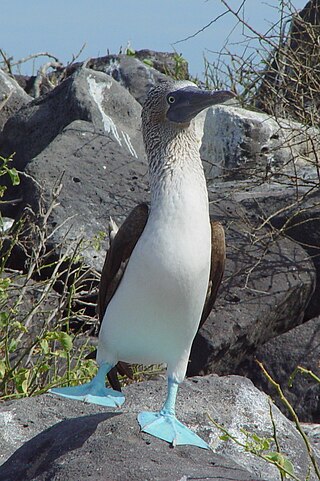
A booby is a seabird in the genus Sula, part of the family Sulidae. Boobies are closely related to the gannets (Morus), which were formerly included in Sula.

Sardine and pilchard are common names for various species of small, oily forage fish in the herring family Clupeidae. The term 'sardine' was first used in English during the early 15th century; a somewhat dubious etymology says it comes from the Italian island of Sardinia, around which sardines were once supposedly abundant.
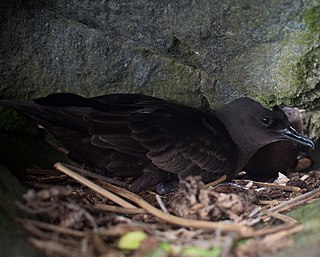
Bulwer's petrel is a small petrel in the family Procellariidae that is found in tropical and subtropical regions of the Atlantic, Indian and Pacific Oceans. It is named after the English naturalist James Bulwer.

The Acrochordidae, commonly known as wart snakes, Java wart snakes, file snakes, elephant trunk snakes, or dogface snakes are a monogeneric family created for the genus Acrochordus. This is a group of basal aquatic snakes found in Australia and tropical Asia. Currently, three species are recognized.

The New Zealand plover is a species of shorebird found only in certain areas of New Zealand. It is also called the New Zealand dotterel or red-breasted dotterel, and its Māori names include tūturiwhatu, pukunui, and kūkuruatu.

Isla Todos Santos is a pair of islands about 19.3 km (12.0 mi) off Ensenada, Baja California, at 31°47′59″N116°47′20″W best known for surfing. Access is only by boat, which can be rented in Ensenada, or La Bufadora. The waves off the smallest island are among the biggest in North America. There are no facilities on the islands except for two lighthouses and a fish farm operation.

The mottled petrel or kōrure is a species of seabird and a member of the gadfly petrels. It usually attains 33 to 35 cm (13–14 in) in length with a 74 to 82 cm (29–32 in) wingspan.

The fairy tern is a small tern which is native to the southwestern Pacific. It is listed as "Vulnerable" by the IUCN and the New Zealand subspecies is "Critically Endangered".

The Auckland shag or Auckland Islands shag is a species of cormorant from New Zealand. The species is endemic to the Auckland Islands archipelago. It is a sedentary bird that primarily eats various crustaceans and fish. In recent years, roughly 1,000 pairs have been recorded. The Auckland shag is a colonial nester, building sizeable nests of, among other items, grass, twigs and seaweed. The Auckland shag lays three pale blue-green eggs in November–February. The incubation period is 26–32 days.

The Sunda scops owl is a small brown owl native to the Sunda Islands.
This article is a list of biological species, subspecies, and evolutionary significant units that are known to have become extinct during the Holocene, the current geologic epoch, ordered by their known or approximate date of disappearance from oldest to most recent.

The Tinian monarch is a species of bird in the family Monarchidae. It is endemic to the Northern Mariana Islands.
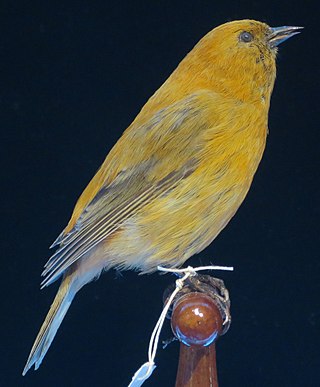
The Maui ʻakepa is a species of ʻakepa native to Maui in the Hawaiian Islands, and which was common throughout the island. Introduced mosquitoes and other animals to Maui contributed to the declining population, and the bird is considered Critically Endangered by the IUCN Red List of Threatened Species. The latest reported sighting of this bird was in 1988, and in 2021 the United States Fish and Wildlife Service proposed declaring it extinct. The species was delisted from the Endangered Species Act on October 16, 2023 citing extinction.

The Kauaʻi nukupuʻu was a species of nukupuʻu once found throughout parts of the Hawaiian island of Kauaʻi. It was an insect eater that picked out its tiny prey from tree bark. The males were yellowish with brown wings, while the females were grayish brown with a yellow throat streak.
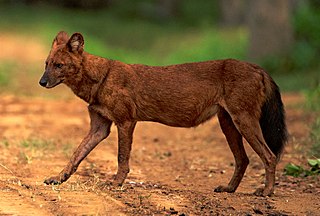
An endangered species is a species that is very likely to become extinct in the near future, either worldwide or in a particular political jurisdiction. Endangered species may be at risk due to factors such as habitat loss, poaching, invasive species, and climate change. The International Union for Conservation of Nature (IUCN) Red List lists the global conservation status of many species, and various other agencies assess the status of species within particular areas. Many nations have laws that protect conservation-reliant species which, for example, forbid hunting, restrict land development, or create protected areas. Some endangered species are the target of extensive conservation efforts such as captive breeding and habitat restoration.
Bryx is a genus of pipefishes.
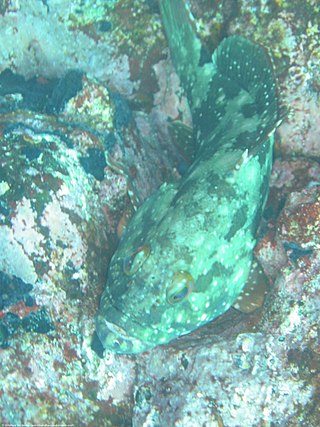
Epinephelus labriformis, commonly called starry grouper or flag cabrilla is a species of marine ray-finned fish, a grouper from the subfamily Epinephelinae which is part of the family Serranidae, which also includes the anthias and sea basses. It is found in the eastern Pacific Ocean.
Bryx analicarens is a species of marine fish of the family Syngnathidae. It is found in rocky tidepools and algae to depths of 45 metres (148 ft), in the Indian Ocean, Red Sea, and Persian Gulf. It can grow to lengths of 13 centimetres (5.1 in), and is suspected to feed on benthic and planktonic crustaceans. This species is ovoviviparous, with the males carrying eggs in a brood pouch until they hatch.
Bryx dunckeri is a species of pipefish of the family Syngnathidae. It is found in the western Atlantic Ocean, from North Carolina to Florida and the Bahamas, in the Gulf of Mexico, and off South America to Macau, Brazil. It inhabits shallow waters above algae and rock, both in estuaries and seagrass beds. It primarily feeds on benthic invertebrates such as crabs and molluscs, and can grow to lengths of 10 centimetres (3.9 in). This species is ovoviviparous, with the males carrying eggs until they are ready to hatch.
Bryx randalli, the ocellated pipefish, is a species of marine fish of the family Syngnathidae. It is found in the western Atlantic in the Caribbean Sea, where it inhabits the shallow subtidal zone to depths of 30m. It feeds on benthic invertebrates such as crabs and molluscs, and is less than 10 cm long. This species is ovoviviparous, with the males carrying the eggs in their brood pouch until they hatch.















